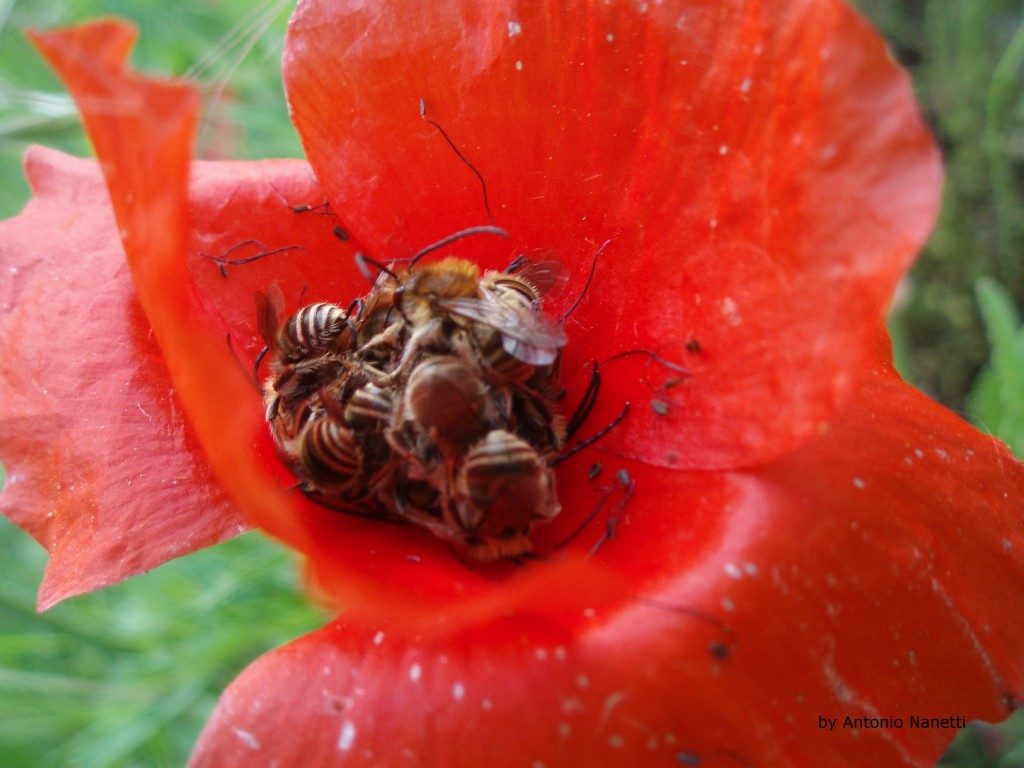One of the side effects of the attention pollinators get, is that you can buy “bee friendly” plants everywhere. However, as with every hype, it may be wise to take a closer look at these plants. Not always the flowers are really bee friendly and sometimes you may also do harm. A very recent example for this are the seeds the Cereal Brand “Cheerios” was giving away in the USA. The intentions were good, but apparently they did not ask somebody who knew. The problem was that the seed mix they were giving away contained non-native, potentially invasive species. By this, the good intention could turn into a threat for biodiversity – both native plants and bees. The problem, again, was simplifying a complex topic too much. I always wonder why companies do not involve biologists for questions like this – but that’s another story.
No “one fits it all” solution
Probably I will repeat this until I die: there is no simple solution to save bees. Equally as honey bees cannot replace all others (or even less all pollinators), a fixed variety of flowers will not help bees everywhere. Non-native, invasive flowers may outcompete native plants. I have seen seed mixes with mainly sterile garden hybrids. These meadows my be beautiful for humans, but they do not help bees. Dandelions are an early food source for many bees, but not for all of them. In addition, dandelions grow where nutrients are available. But many wildflowers need places with less nutrients. You will find a huge diversity both of flowers and pollinators in areas that seem less thriving than a dandelion meadow. Seed mixes that work well in UK, may not in the Mediterranean countries where most European bees live.

Andrena cineraria on dandelion
So what should you consider if you want to have a bee friendly garden? A good advice may be to keep your eyes open when you are outdoors. Look at the wildflowers you see – can you grow them in your garden? Or are there garden varieties that are attractive, too? An example for this are bell flowers. The one you see above this post are garden varieties of a native species, and since I have it on my terrace, it has always been very attractive for all kind of bees.
But there are plenty of flowers that will attract and help bees and other pollinators in your garden. Try to keep a steady offer throughout the whole year. As a rule of thumb: the more “wild type” a flower looks like the better. And do not chose filled varieties, bees have difficulties to handle them and many are sterile.

Willows offer very early pollen and nectar for many bees. There are also bees specialized on their pollen.

Fruit trees are very attractive for bees. Here a Orchard Mason Bee approaches cherry flowers.

Bumblebees like knapweed.

Poppies are pollen source and sleeping place. Foto: A. Nanetti

“Hairy” plants like Stachys attract the Wool Carder Bee. Feeding and mating at the same time…
Not all as bee friendly as claimed
In garden centers, you can find a large variety of bee friendly plants. But be careful: not all plants that claim to be bee friendly really are. Some varieties of certain species are much less attractive than others. This was shown in a talk of the conference in Celle I visited in March. A Dahlia variety claimed as attractive for bees, was visited much less by pollinators than a less advertised variety. This is confirmed by a garden center study in UK. Not all plants that were thought to be attractive for bees were visited.
The solution may be quite simple: observe the flowers for a while. For me garden centers are a kind of playground, I stay there for hours. I pass by the same plants several times, look at them… And while it seems I’m comparing prices and cannot decide, I chose only those where I see bees on. In garden centers mainly honey and bumblebees, but that’s a start. And finally, ask for native flowers. Some plant nurseries have specialised on them and they surely will be glad to offer some advice.




The American or tall bellflower.a native plant, attracts the oligolectic leaf cutting bee Megachile campanulae campanulae which requires it for its very life. I have observed that the nonnative creeping bellflower, which originated in Europe, which I am trying to get rid of, and which is invasive or perhaps just naturalized,and blooms slightly earlier than the American bellflower, also attracts bees.
Do these bees include Megachile campanulae campanulae? Thank you. Charlotte Adelman, co-author, “The Midwestern Native Garden, Native Alternatives to Nonnative Flowers and Plants, an Illustrated Guide.” (Ohio University Press.)
Hi Charlotte,
thank you for your question. Bellflowers are generally very attractive for several bee species. Being European, I don’t know exactly the biology of M. campanulae, but I would assume that they would feed also on other bellflowers. However, creeping bellflower can be very invasive. Independently of their attractivity to bees, the problem is the possible disruption of plant communities due to an invasive plant. And, as a consequence, also of the associated insect fauna in the long run. Therefore, I wouldn’t propagate it in areas where it isn’t native. And from what I see, the American bellflower is stunning!